Why You Need Dental Floss, and How to Use It Correctly
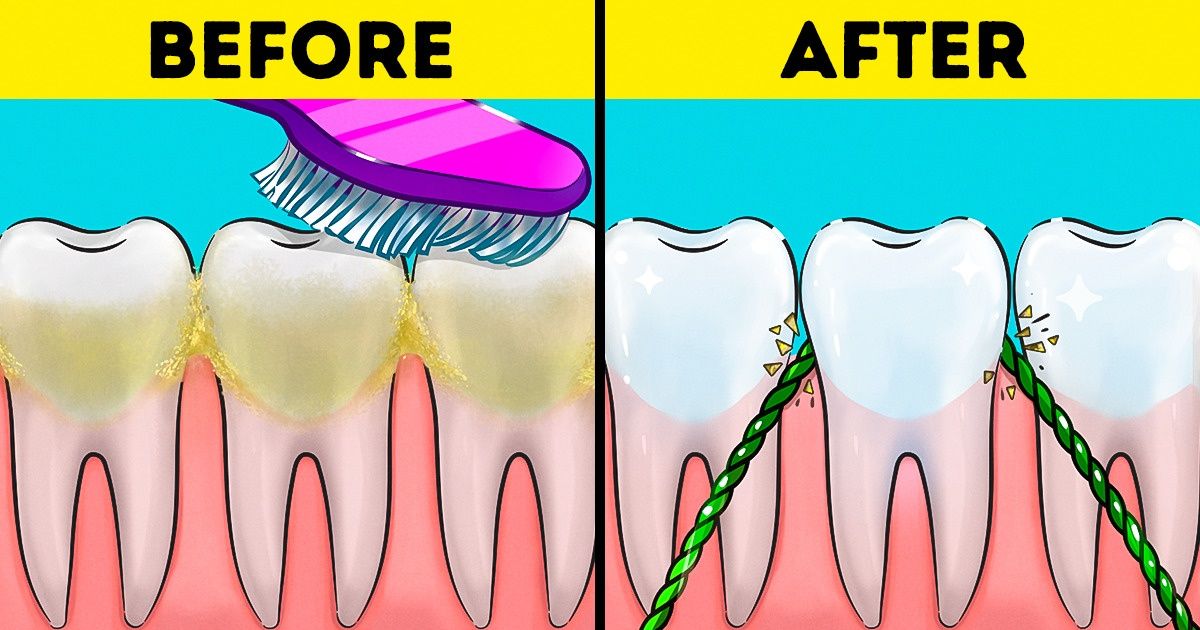
Dental floss helps remove food debris and bacterial film from forming between teeth before it hardens and turns into plaque. An ordinary brush can’t do this task. Its wide bristles can’t go deep into the spaces between the teeth, especially if they’re really close together.
5-Minute Crafts prepared some illustrated instructions for how to properly use dental floss. By using it on a regular basis, you’ll decrease the possibility of cavities and improve your oral health.
Why a toothbrush is not enough for cleaning your teeth
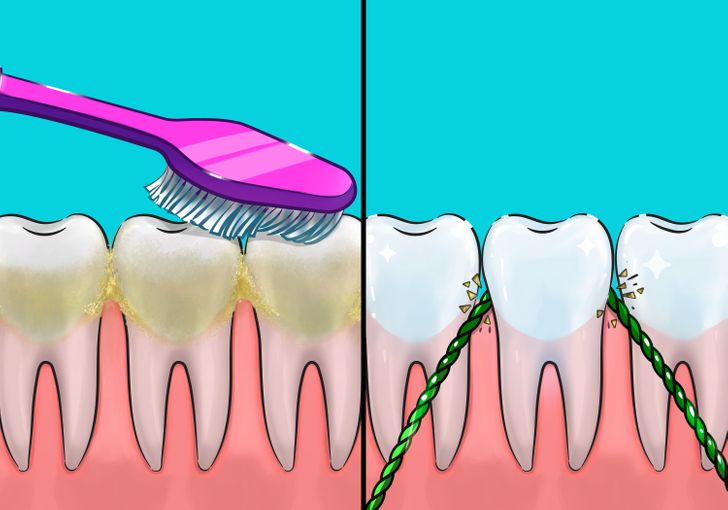
To fully clean your teeth, it’s not enough to use only a brush and toothpaste because, without mouthwash and dental floss, it’s impossible to remove bacterial plaque and food debris from hard-to-reach places where an ordinary brush cannot physically get.
Dentists recommend that you start brushing your teeth with dental floss, which will remove food debris in hard-to-reach areas and also remove bacterial plaque. By the way, some dental floss also has a whitening effect.
After flossing, you can start brushing with toothpaste and a toothbrush. In the end, it is enough to spit out the remaining paste and rinse your mouth with a mouthwash containing fluoride for 30-60 seconds. Such an integrated approach helps to thoroughly clean the teeth and more reliably protect the enamel from the effects of bacteria.
Types of dental floss
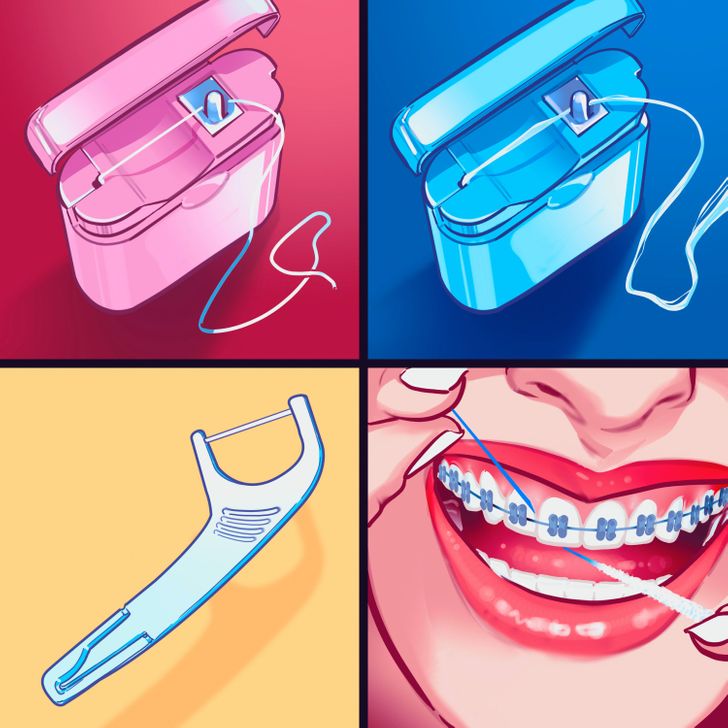
The range of dental floss is wide.
Standard nylon floss: This is quite popular and is the most affordable option.
Waxed nylon floss: Standard nylon floss covered in wax helps it slide between teeth. In terms of efficiency, it does not surpass ordinary nylon floss.
Flat nylon floss: It’s made in the form of flat tape, thanks to which many people note that it slides more easily between the teeth. It can also be soaked in wax.
Flosser: This dental floss is wrapped around a special plastic handle. It’s ready to use right out of the box, but can be tricky to use and less effective than other types of floss.
Superfloss: It is used for cleaning braces, bridges, and wide gaps between teeth. It consists of 3 components — a hard tip, a wide spongy fiber, and regular dental floss.
How to choose dental floss
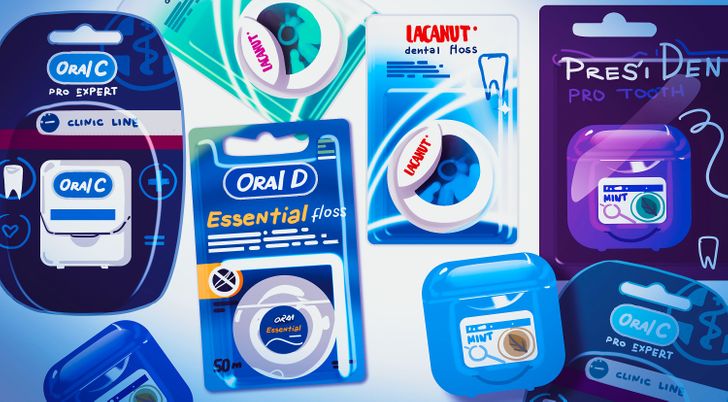
Thread thickness: Choose a thin one if the gaps between your teeth are very narrow and a thicker one if the gaps are wider. Super floss is suitable for wide gaps.
Multiple types of dental floss: If your teeth have gaps of different widths, it makes sense to alternate between 2 different types of floss.
Waxed and unwaxed floss: It depends on your personal preference. But in general, waxed floss moves easier between teeth or braces.
Flavored floss: Sometimes dental floss is saturated with menthol extract. It freshens your breath, like when you floss your teeth after a meal. Before purchasing such floss, make sure that you’re not hypersensitive to menthol.
How to use dental floss
1. Break off 15 to 18 inches of floss and wind most of it around one of your middle fingers. Wind the remaining floss around the same finger of the opposite hand.
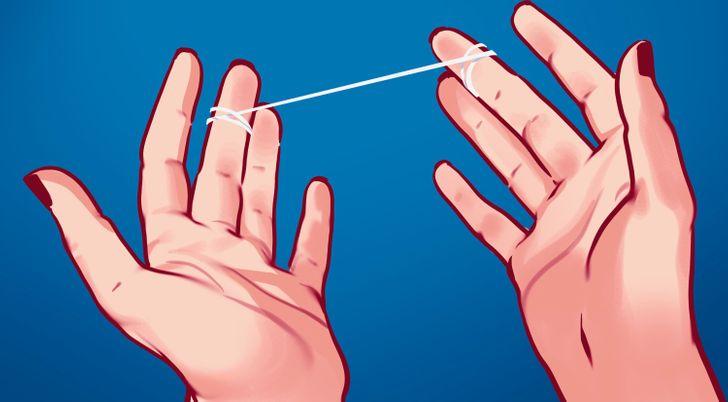
2. Hold the floss tightly between your thumbs and forefingers.
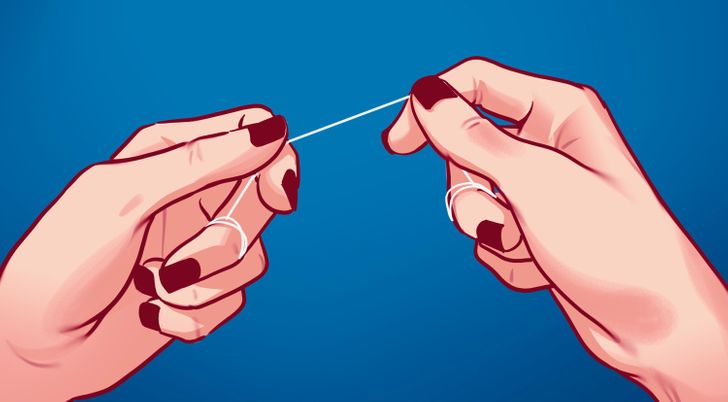
3. Guide the floss between your teeth using a gentle rubbing motion. Never snap the floss into the gums.
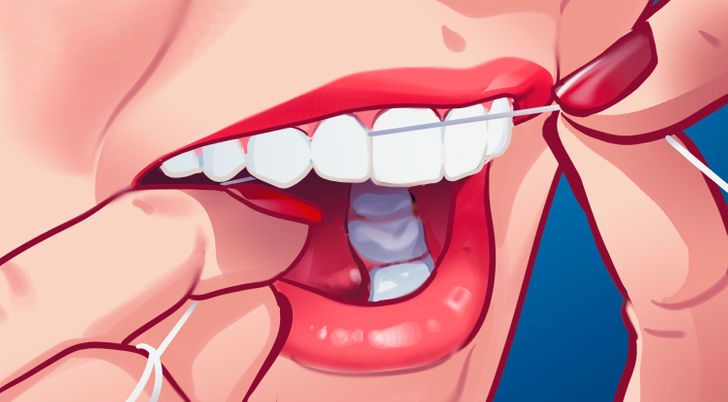
4. When the floss reaches the gum line, curve it into a “C” shape against one tooth. Gently slide it into the space between the gum and the tooth.
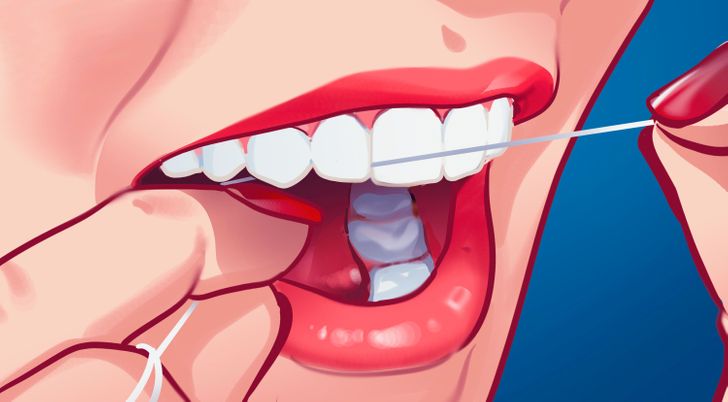
5. Hold the floss tightly against the tooth. Gently rub the side of the tooth, moving the floss away from the gum with up and down motions. Repeat this method on the rest of your teeth.
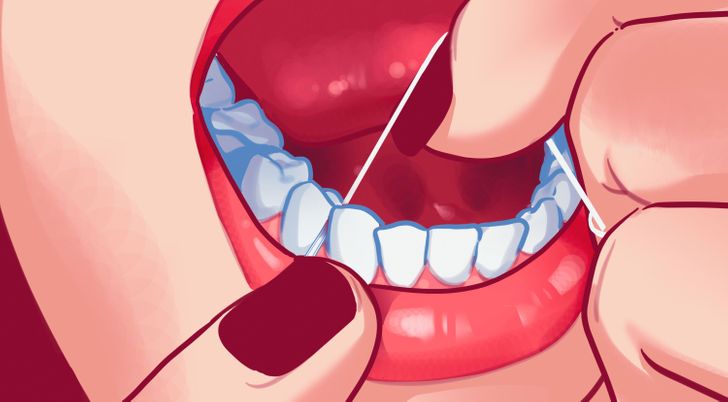
When you should floss
Floss your teeth at least once a day, before your morning or evening brushing. There’s no limit to how many times you can floss a day. You can do it whenever you have food debris stuck in your teeth if it’s making you feel uncomfortable.